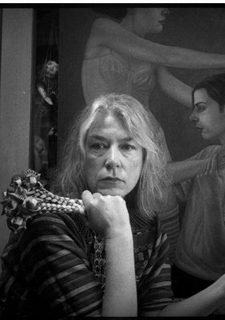 | Born in 1947 in the United States, she attended the university both in the U.S.A. (Washington DC), and in Europe (Grenoble, France, and Munich, Germany). She has had many one person and group exhibitions since 1974 and has been represented by Gallery K in Washington DC since 1981 and the Katharina Rich Perlow Gallery in N.Y.C. since 1996. Her works are in the collections of various museums including the National Museum of American Art, the Hirshhorn Museum and Sculpture Garden and the Corcoran Gallery of Art, Washington DC, The Huntington Museum of Art, Huntington, WV, The Washington, DC, and numerous private collections. In 1987 she moved to Italy, still maintaining connections with the galleries and artistic culture in the U.S.A. In 1995 she won the Pollock-Krasner Foundation Grant.
|
  | "Lani Irwin: Paintings," Katharina Rich Perlow Gallery, New York City (October 2000) |  | Jill Wechsler, "Lani Irwin," American Artist, June 1983 |  | Richard Cavendish, The Tarot,New York: Harper & Row, 1975 |  | Bill Butler, Dictionary of the Tarot New York: Schocken, 1975 |  | Jamake Highwater, The Language of Vision: Meditations on Myth and Metaphor, New York: Grove Press, 1994 p. 210. the Roman Pasha, "The Inanimate Incarnate" in Fragments for a History of the Human Body, Part One, ed. by Michael Feher with Rom |  | Kay Turner, Beautiful Necessity: The Art and Meaning of Women's Altars, New York: Thames & Hudson, 1999, p. 96.
|  | Gail Leggio, American Arts Quarterly, 2001 Vol. XVIII, No.2 |  |
JOSEPH JENNINGS, LANI IRWIN'S ALLEGORIES SHOW, Rome, July 2003
Lani Irwin's new series of paintings named Allegories
challenge the viewer to directly engage the human nude figure without material or sexual diversions. In these ten |
|